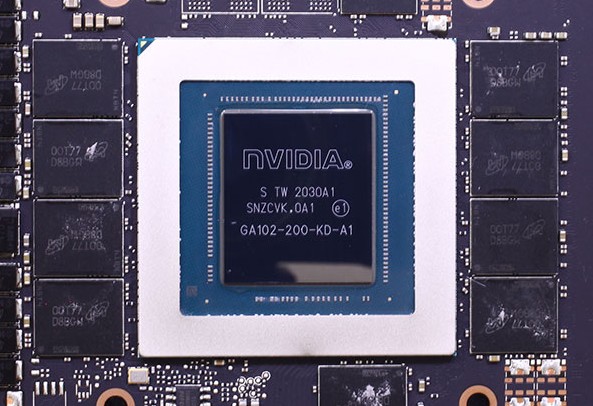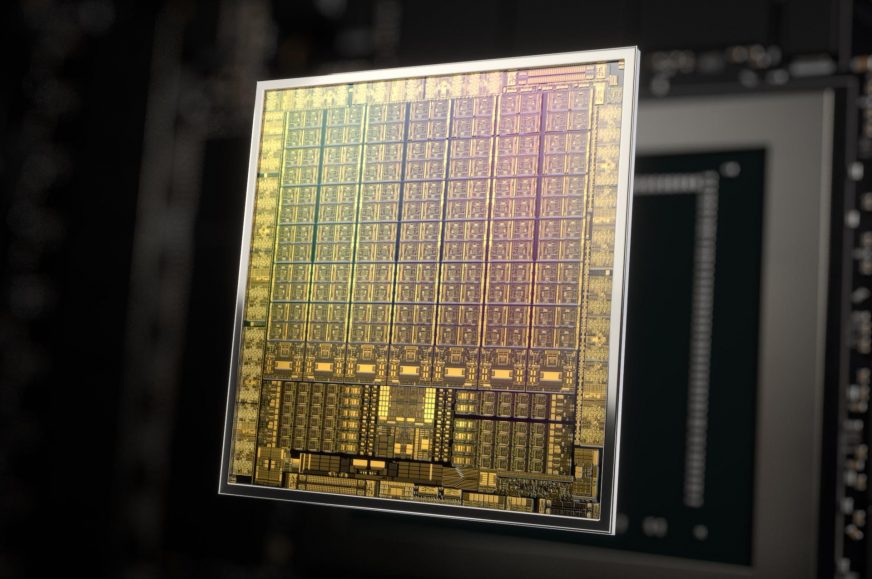First information about GeForce RTX 4000 GPUs outed?
A year ago, even before Nvidia’s announcement of Ampere, it was leaked that the followup to the current generation is likely called Hopper. But it looks like there may have been a change of plan. According to current leaks, Nvidia is readjusting GPU roadmaps and instead of Hopper chips, the next generation could be called Lovelace. These GPUs are said to already be 5nm and the increase in performance could be very large.
Leaker Kopiter7kimi, who brought a lot of news about this year’s upcoming Ampere GPUs, often quite in advance (indicating very good information sources), tweeted this month that the development of Hopper GPUs has likely been delayed a bit, or tha company postponed this product.
Hopper is said to have an MCM architecture – being chiplet GPUs consisting of several pieces of silicon, similarly to AMD Ryzen Threadripper processors. This could open the way to levels of performance that are not achievable with a single silicon, because the area of one chip has its limits (somewhere around 820 mm²). But maybe it turned it’s too early for chiplet GPUs, or other problems possibly need to be solved first, so it seems another generation should come before Hopper does.
I'm afraid the Next-Gen GPU (Hopper) based on MCM was delayed. Is Jensen going to draw a new roadmap instead? It looks very probable.
— kopite7kimi (@kopite7kimi) December 10, 2020
According to VideoCardz these chips are internally marked with the abbreviation AD (i.e. AD100, AD102, AD104). But the code name is said to be Lovelace, according to rumours that VideoCardz has received, as well as Kopite7kimi. This is a homage to Ada Lovelace, a British mathematician from the first half of the 19th century collaborating with Charles Babbage, whose work was one of the precursors for the eventual development of computers and programming.
Augusta Ada King, Countess of Lovelace pic.twitter.com/abEzBjjFOz
— kopite7kimi (@kopite7kimi) December 11, 2020
According to Kopite7kimi, the Lovelace GPU should be manufactured on 5nm process, with the EUV technology. Samsung recently entered into further chip agreements with Nvidia, so its 5nm process might be used (although it is probably not out of the question for Nvidia to use both TSMC and Samsung as leverage as this also improves its negotiating power).
Interestingly, Lovelace does not use the labelling system of Maxwell, Pascal, Volta and Ampere architectures (GMx, GPx, GVx, GAx) and the chip’s label does not start traditionally with ‘G’. But Nvidia has already done this for Turing chips (TUx labelling). It is possible that Lovelace was added to the roadmap with a similar intention and is somehow related to Turing. One explanation could be that while Ampere covers both computing and gaming, Lovelace/AD could be intended only for GeForce gaming cards and not for computing accelerators, which would then jump from Ampere straight to the Hopper architecture.
Hopper GPUs, if they have a chiplet design, could perhaps be purely for the computing segment due to manufacturing costs, in turn. In theory there could be a split of architectures like there was with Volta and Turing.
The 5nm manufacturing process should bring a significant improvement in energy efficiency over the 8nm process (which is a derivative of 10nm technology) used in gaming Ampere GPUs, so a significant increase in performance could be fit in a given TDP value. The inter-generation performance boost could be the same, if not greater, as between Turing and Ampere.

Up to 18,432 shaders? Not so fast…
It is probably too early to ask for the specs of the chips, but Kopite7kimi also shared a certain piece of information or rumour in his tweet. While the fastest gaming Ampere (GA102) consists of 7 GPC blocks, each consisting of six TPC blocks (a TPC is two SM blocks), the most powerful GPU in the Lovelace generation could possibly have 12 GPC blocks each with six TPCs, according to this leaker. So while the GA102 contains 84 SMs, the fastest Lovelace (perhaps AD102?) could have up to 144 SM blocks. This would pack the GPU with 18,432 shaders, if Nvidia keeps the 128 shaders per SM setup.
GA102 has a "7*6" structure.
Maybe AD102 will get a "12*6" structure.— kopite7kimi (@kopite7kimi) December 28, 2020
In the shipping products, some of the shaders will likely be deactivated to improve yields, but you still get the idea – such chip would have more than 70% more computing units. If the frequency was similar to Ampere, and the performance of the GPU per unit and per MHz (something like “IPC”) also improved slightly, then the GPU could be almost twice as fast as GA102.
Discussion of this number of units have already begun in various places, but for now we probably shouldn’t consider it 100% true, because it is possible that this was more of a speculation. In Kopite7kimi’s tweets, he does not seem to directly present this as information leaked directly from Nvidia. Such a large increase in computing units can not be ruled out, but in the end the GPU’s “width” may be different.
2021 or 2022?
It is also not entirely clear when these GPUs will hit the market. The nearest possible release is probably at the end of 2021, if Nvidia was in a hurry or it felt the need to put more pressure on AMD. But new generations of GeForce graphics cards have always come at two-year intervals lately, so it seems more logical for Lovelace GPUs to come to the market in 2022. Next summer, we will probably only see a refresh of Ampere, perhaps under the GeForce RTX 3000 Super name.
English translation and edit by Lukáš Terényi








